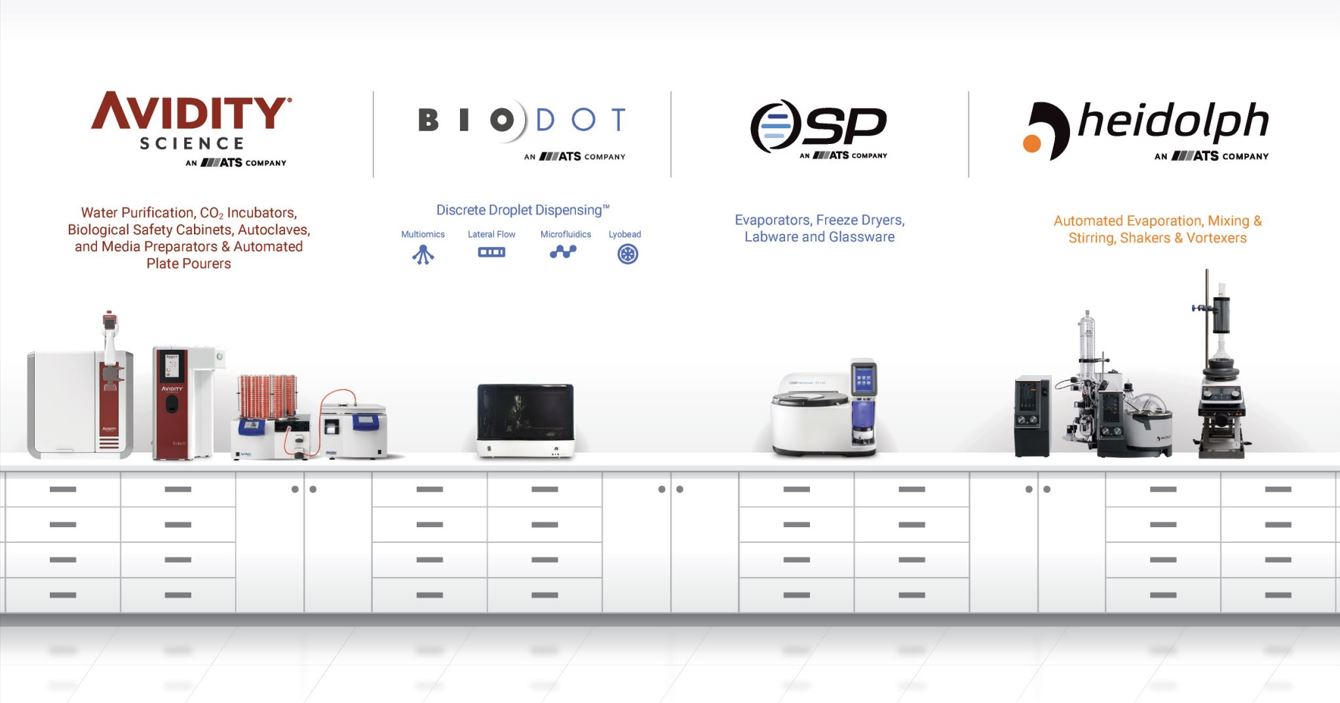Revolutionizing Single-Cell Proteomics

BioDot is at the forefront of the automated liquid handling industry, transforming life sciences. BioDot envisions a scientific environment where researchers and technicians can run thousands of tests on a single machine in a matter of minutes, empowering them to focus on the groundbreaking discoveries that shape the future. Automation is an indispensable tool that streamlines repetitive and time-consuming experimental setups, an asset for analyses such as qPCR and Lab-on-a-Chip.
In today’s blog, we examine the science of single-cell proteomics; a powerful technique that benefits immensely from automation and reduced sample volumes.
Background
Proteins orchestrate a vast array of cellular functions as the primary workhorses in a cell. Protein functions can vary widely: providing structure, producing energy, communicating, and moving. Proteins (or polypeptides) are critical to cellular life and are formed of smaller units, known as peptides.
However, the study of proteins (called proteomics) poses a challenge due to the low overall volumes involved. Proteins cannot be amplified with methods like PCR for nucleic acids. Finding a way to study proteins, especially at the single-cell level, is incredibly challenging. However, it is also as important as it is challenging. Knowledge of the individual proteins in a cell allows the scientific community to study individual cellular states and dynamics, including cell differentiation, disease mechanisms in tumors, and drug responses.
The Challenge of Quantifying Single-Cell Proteins
In DNA, PCR (polymerase chain reaction) can overcome the low abundance by repeatedly duplicating DNA. But proteins lack this amplification capability.1
A current workaround involves pooling similar cells (e.g., bacterial strains) and averaging their protein counts. While effective for homogeneous cell populations in asexual species, this approach falls short when applied to heterogenous cell populations in multicellular organisms, rapidly mutating tumors, or mosaic cells.2,3 While pooling cells can work well with homogenous populations, new techniques are needed to study complex populations. To characterize complex systems, research must focus on the identification and quantification of the protein molecules in a single cell, instead of an average.
In recent years, scientists have turned to mass spectrometry (or mass spectroscopy/MS) to resolve this hurdle. Mass Spec is sensitive enough to identify peptides on a single-cell level. The proportion of peptides in a cell can then be used to infer the abundance of proteins in the cell. The steps for using mass spec to identify proteins are as follows:
- Extract individual cells from tissue.
- Separate the cells into their constituent components and isolate the proteins.
- Digest the proteins into peptides using enzymes.
- Tag the peptides to their parent cell.
- A lab technician then compares peptides from individual cells to peptides from other cells.

While simple in theory, sample preparation for MS is an arduous task, due to the minute amounts of material involved. Tiny sample sizes means that there are significant risks of sample over-dilution with solution.
Sample concentration concerns can be addressed by reducing the total sample volume (including solution and peptides) to less than 200 nanoliters (nL), which concentrates enzymes and enhances reaction efficiency.
Another hurdle in single-cell proteomics is throughput. Analyzing single cells, one at a time, is time-consuming. Researchers need to evaluate a large enough quantity of cells to achieve statistical significance and detect anomalous cell populations. In response to this challenge, researchers have developed automated sample preparation methods capable of handling low volumes. These automated methods offer several advantages:
- Speed: Automated sample preparation significantly reduces processing times, streamlining the overall workflow, and freeing up the lab technician’s time.
- Scalability: Automated sample preparation enables the simultaneous processing of thousands of single cells, enabling high-throughput analysis.
- Cost Saving: By utilizing common plasticware and inexpensive reagents, automated methods minimize consumable expenses and further stretch limited funding.
The Future of Single-Cell Proteomics
Advancements in sample preparation volume reduction and automation continue to reshape single-cell proteomics. At BioDot, we are at the forefront of this journey, We specialize in intricate procedures because of our unparalleled expertise in nanoliter and picoliter volumes. The BioDot AD1520, equipped with an XYZ robot and four BioJet dispensers, sets a new standard in precision multiplexing and is capable of dispensing as low as 2nL. Our flagship product, the BioDot Omnia, can dispense as little as 25pL when equipped with a Rainmaker dispenser.
Our proven track record in diverse life science fields, including Biosensors, Lab-on-a-chip, and Cytogenetics, demonstrates that our instruments can revolutionize single-cell proteomics. We enable you to quantify thousands of proteins and analyze hundreds of single cells per day. With BioDot as your partner, you could be the driving force behind the next groundbreaking discovery.
If you are a researcher seeking to elevate your sample preparation with robustness, high throughput, and cost-effectiveness, we invite you to contact us for a feasibility assessment. Together, we can unlock the full potential of single-cell proteomics and unveil groundbreaking discoveries that will redefine our understanding of biology.
References
- Mansuri, M. S., Williams, K., & Nairn, A. C. (2023). Uncovering biology by single-cell proteomics. Communications Biology, 6(1), 381.
- Elowitz, M. B., Levine, A. J., Siggia, E. D., & Swain, P. S. (2002). Stochastic gene expression in a single cell. Science, 297(5584), 1183-1186.
- Specht, H., & Slavov, N. (2018). Transformative opportunities for single-cell proteomics. Journal of Proteome Research, 17(8), 2565-2571.
About the Author

Wesley Thio is an Associate Product Marketing Manager at BioDot Inc. He obtained his B.S in Electrical and Computer Engineering at The Ohio State University in 2018 and his M.S in Electrical and Computer Engineering at the University of Michigan. His research studies in chaotic circuits, batteries and AI accelerator hardware have resulted in no less than a dozen publications, several patents and the textbook Elegant Circuits: Simple Chaotic Oscillators. He won Ohio State’s Next Generation Innovator award in 2018.





